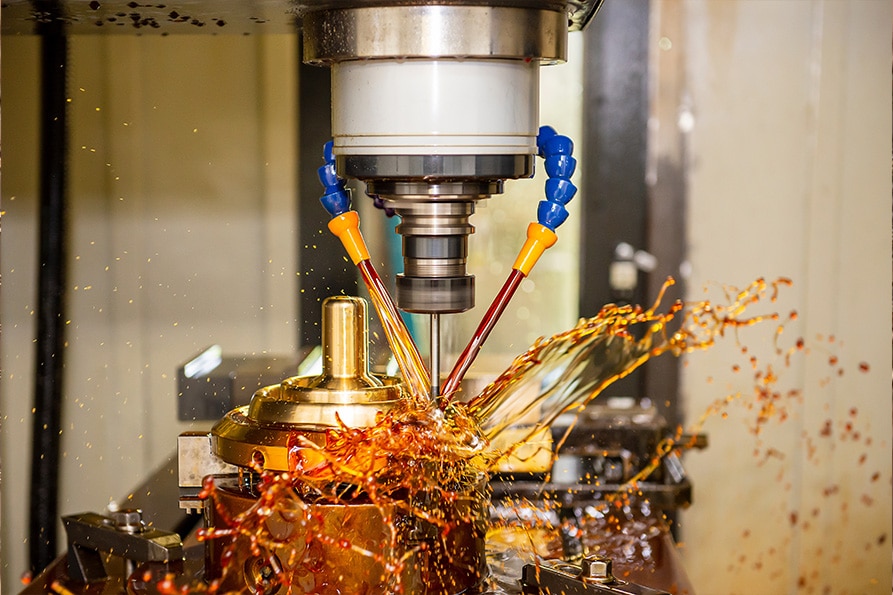
Many systems and devices used in industrial and manufacturing processes require lubrication to operate correctly. The type of industrial lubricants and how systems incorporate them varies based on the kind of device, the operating environment, and other factors.
There are four main types of industrial lubricants:
Greases
Greases are made from oil, such as mineral oil, to which thickening soaps and other substances are added to produce the desired tackiness and other properties.
Oils
Oils can also be effective lubricants in their natural, non-thickened state. Lubricant makers blend additives into oils to prevent oxidation, inhibit corrosion, etc.
Dry Lubricants
Dry lubricants, also called dry film lubricants, are materials like graphite, molybdenum, and silicon that are mixed with binders and applied to surfaces. They are most useful when extreme temperatures or pressures make liquid lubricants ineffective.
Penetrating Lubricants
Penetrating lubricants are low-viscosity oils that are more for removing rust than creating smooth-gliding surfaces.
These benefits of these lubricants—especially the first three—can be magnified by coating the surfaces they protect with chromium.

An Example of Synergy Between a Lubricant and a Chromium Coating
A Common Synergy for Bearings
Roller bearings provide a helpful illustration of how the combination of adequate lubrication and chromium coatings is highly effective at improving device performance. The ability of this “dynamic duo” to prevent corrosion is particularly valuable.
Many coating materials are not well-suited for use in roller bearing systems. However, in conjunction with proper lubrication, Armoloy Thin Dense Chrome (TDC) provides exceptional protection for system components.
TDC is 98% chrome. Its cone-shaped structure makes it extremely hard yet very elastic. And the highly pure material can be applied, as the name implies, in very thin layers.
Equipment owners and users observe multiple benefits from TDC, including:
- Reduced corrosion
- Decreased wear
- Extended service periods
- Energy savings
- More efficient use of materials
All of these factors can, of course, reduce operating costs, thereby increasing net revenue and profitability.
And because the coating application process temperature is below 80°C, there is no structural change to the material or the dimensional stability of the coated rolling bearings and linear components.
Preventative Measure as a Benefit
Another benefit of chromium coatings in bearing components is improved emergency run properties. If a machine’s lubrication system stops working, for example, the device can continue running under partial load for a short time. Operators will have to shut the machine down promptly in this scenario, but an intentional shutdown versus the “seizing up” of components helps minimize or prevent costly secondary damage.
Regarding corrosion reduction specifically, coating a surface with TDC protects it against water, steam, caustic solutions, and even acid to some degree. Remarkable results were noted in a salt spray test carried out according to ASTM B 117 that largely conformed to DIN 50 021.
Within 24 hours, an uncoated standard bearing developed corrosion over 95% of its surface. Bearings made of corrosion-resistant steel fared better, showing deterioration on 25% of their surface. But the clear “winner” was TDC-coated bearings. They developed corrosion on just 1% of their surface area.
The Bottom Line on Bearings and Industrial Lubricants
Whether a particular system or component can accommodate lubrication and chromium coatings or only chromium coatings, the addition of that protective layer can significantly improve performance and protection. If you have not used TDC or related coatings in the past, the proven benefits certainly justify the time it takes to learn more and potentially move forward with a protection strategy.